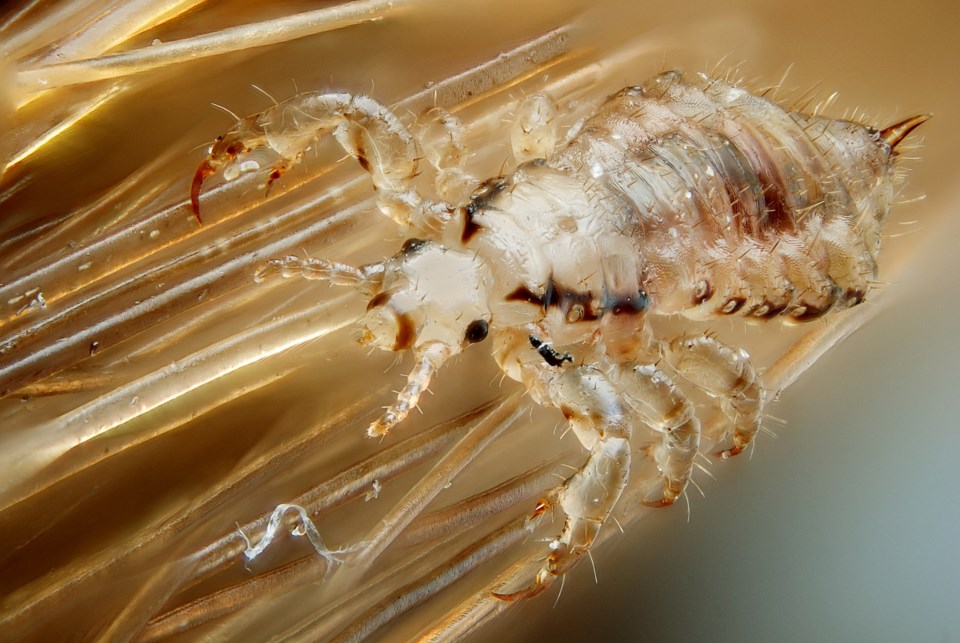Head lice are not the most pleasant critters, but they are a fact of life, especially among some schoolchildren.
Head lice are wingless insects found on the human scalp.
They do not carry disease, but they can cause infections as a result of head lice sufferers scratching at their affected scalps.
They can be contracted at any age, but are most likely to spread among schoolchildren from head-to-head contact, as youngsters tend to work and play close to each other and share items such as winter hats, scarves and helmets.
They do not come about as a result of poor hygiene.
A head lice condition is easily treated with a head lice shampoo, creme rinse or lotion, or an oil treatment.
There is no current major outbreak of pediculosis (head lice) in Sault Ste. Marie, but some Ontario school boards have reviewed their policies when it comes to addressing cases of children with head lice.
A recent Canadian Pediatric Society report stated head lice are not a public health risk and children should not be kept away from school during treatment, as it disrupts their learning.
"We're aware some of the school boards have been revisiting their policies…it has created quite an outcry in some communities from parents who are concerned with having to deal with it," said Lucia Reese, Algoma District School Board (ADSB) director of education, speaking to SooToday.
The Sault's two biggest school boards are sticking to their current guidelines in regard to students with head lice.
The ADSB, Reese said, will send a child with head lice home with a note asking parents to ensure the child is treated for the condition before returning to school.
The Huron-Superior Catholic District School Board (HSCDSB) does not have an official policy regarding head lice in its students but does follow a procedural guideline.
"Our procedures call for the students to be treated at home and to return to school when nit free," wrote John Stadnyk, HSCDSB director of education, in an email to SooToday.
"We would call the parents (and ask to have the child treated), then ask the parents to check in with the office when they come back with the child, and we'll check the child's hair with the parents to make sure there are no nits (lice eggs)…we don't segregate (a child with lice), we ask the parents to take the child home for treatment," Reese said.
"(Because nits can return after treatment) we've got clear procedures, we've got staff (usually the school principal) who work with parents (and sometimes parent volunteers) to help check the hair to make sure lice are removed, we recognize it's not pleasant for families and we do everything we can to support families through that."
"We do try to work very closely with students' families, because it a nuisance and an embarrassment for many families," Reese said.
"We've done everything for family support, through providing access to treatment…but our procedure is that we do expect students to be free of nits when they return to school."
"In most cases, parents can take their child home and treat them overnight and be back the next morning, depending on the severity, and if the student is going to be away for a couple of days we would provide school work to take home and, depending on the school, provide support on how they can help the parents at home to remove the nits."
"It (lice) can come from a sports team or from a club the kids go to after school, it's not always being contracted at school… we do communicate that very clearly with students and the parents in the notices we send home, it can happen to anyone," Reese said.
"There is no heavy outbreak (of head lice in the Sault), though there are always head lice circulating in the community, said Liisa Daoust, an Algoma Public Health (APH) public health nurse.
What of reports of so-called 'super lice?'
"As with any bacteria or virus or flu, they are constantly changing and adapting and head lice have done the same thing, so some of our more traditional treatments aren't always working as well as they used to," Daoust said.
Those treatments include permethrin (creme rinses) and a series of medications such as pyrethrins (a special shampoo/conditioner).
These are still the first choice when it comes to treatment of head lice, Daoust said.
A second option suggested by APH is a suffocant treatment, an oil based treatment using vegetable oil or mineral oil to coat the hair and kill off the head lice.
A number of different treatments are available through a pharmacy, Daoust said.
"It's really up to the person…many people have some familiarity with head lice or know somebody who has had lice."
"We definitely get calls weekly and the schools definitely have their own way of dealing with head lice, and often if the parent has gone through the steps with the school, we get the next phone call if steps A or B don't work.
However, Daoust said "if people follow the steps as outlined by us it should work quite well."
Information on head lice and treatment is available on the Algoma Public Health website
